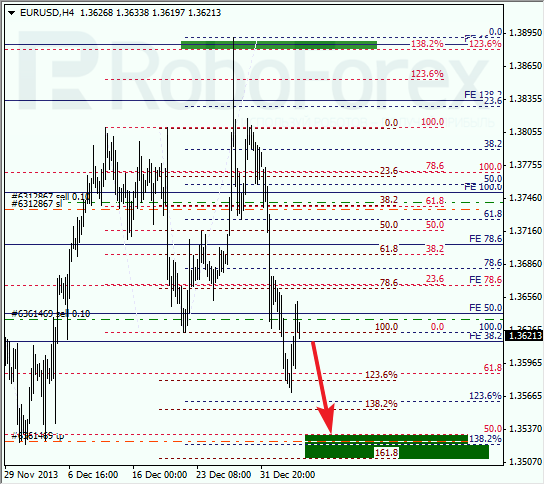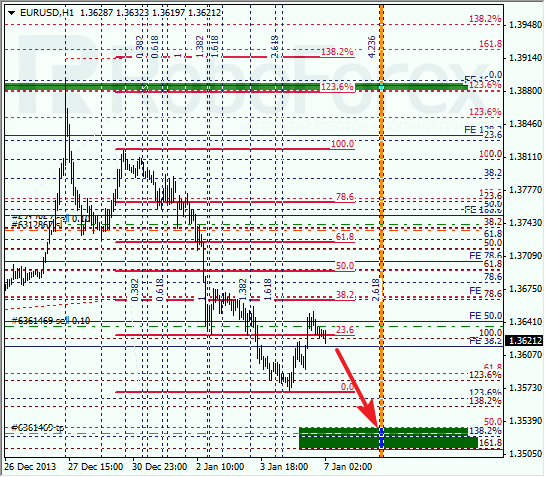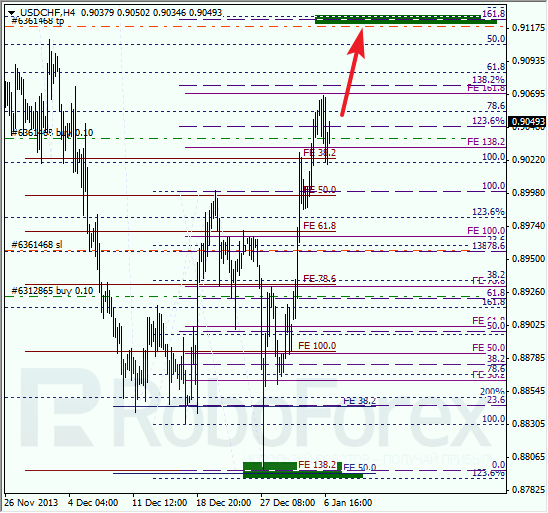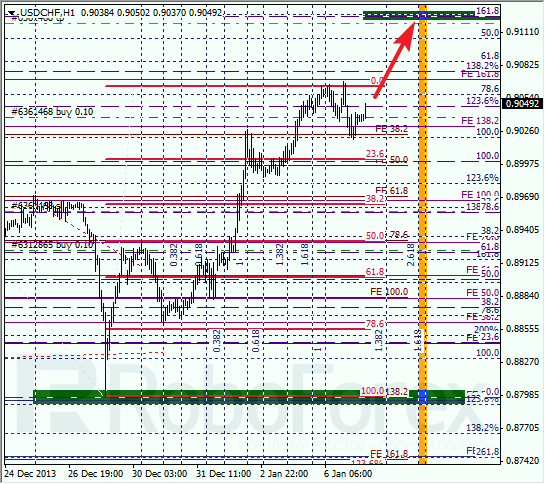By John Mauldin – Thoughts from the Frontline: Forecast 2014 The Human Transformation Revolution
The final letter of the series will discuss what I see as potentially developing in the markets this year, but such prognostication has to be framed within the context of two larger and far more important streams. Next week we will examine the larger economic problems facing much of the developed world, and specifically we’ll consider the Era of Unfulfilled Expectations. What happens when governments and central banks find it impossible to live up to the promises that they have made to their constituencies? Throw in a mix of frustrating demographics and disastrous economic policy choices, and you have a witch’s brew of uncertainties.
Thankfully, an even greater force of progress will ultimately overwhelm the unintended consequences of meddling governments to ultimately deliver a very positive future, even if the the benefits are somewhat unevenly distributed in the shorter term. In this week’s letter we’ll look at the economic effects of the Age of Transformation, countering the arguments that call for a bleak, low-growth future wherein all the marvelous innovations that have occurred in the course of the human experience are behind us. Are we not to see yet again a development with the impact of the steam engine, electrical grid, telecommunications, or combustion engine? I think we will – in fact, fundamental, life-changing innovations are happening all around us today. We are just looking in the wrong places, expecting the future to resemble the past. If the depressing models of zero future growth are right, then our investment choices should be far different than if we have an optimistic view of the human experiment. Yes, we must balance our optimism with an appreciation of the uncertainties that will inevitably result from the antics of overreaching governments and their hubristic economic and monetary policies; but we must first and foremost have our eyes wide open to possibilities for growth.
It might help to think of the process as one of exploration. I imagine a group of intrepid adventurers (I picture in my mind Daniel Boone) topping one mountain pass after another, each time gazing off into the distance … to the next mountain pass. Between them lie beautiful valleys and rivers – as well as parched deserts and dead-end canyons full of potentially hostile natives. So the path is both uncertain and unending, as we head toward some ultimate destination we can barely even speculate about. Such a journey should not be undertaken without a great deal of thought and preparation, and it helps if you can find an experienced guide to assist in the process.
Before we set off on this week’s leg of the journey, since this New Year’s Thoughts from the Frontline is normally the most widely read issue of the year, let me welcome new readers and note that this weekly letter is free, and you can subscribe at http://www.MauldinEconomics.com. And feel free to send this letter on to your friends and associates – I hope it will spark a few interesting conversations.
There is a school of thought that sees the first and second industrial revolutions as having been driven by specific innovations that are so unique and so fundamental that they are unlikely to be repeated. Where will we find any future innovation that is likely to have as much impact as the combustion engine or electricity or (pick your favorite)?
This is a widespread school of thought and is nowhere better illustrated than in the work of Dr. Robert Gordon, who is a professor of economics at Northwestern University and a Nobel laureate. I have previously written about his latest work, a paper called “Is US Economic Growth Over?”
Before I audaciously suggest that he and other matriculants in his school of thought confuse the products of industrial revolutions with their causes, and thus despair over the prospects for future growth, let’s examine a little bit of what he actually says. (You can of course read the original paper, linked above.) To do that we can turn to an article by Benjamin Wallace-Wells that I cited in Outside the Box last June. He explains Robert Gordon’s views better than anyone I am aware of.
“[T]he scope of his [Gordon’s] bleakness has given him, over the past year, a newfound public profile,” Wallace-Wells notes. Gordon offers us two key predictions, both discomfiting. The first pertains to the near future, when, he says, our economy will grow at less than half its average rate over the last century because of a whole raft of structural headwinds.
His second prediction is even more unsettling. He thinks the forces that drove the second industrial revolution (beginning in 1870 and originating largely in the US) were so powerful and so unique that they cannot be equaled in the future.
(A corollary view of Gordon’s, mentioned only indirectly in Wallace-Wells’s article, is that computers and the internet and robotics and nanotech and biotech are no great shakes compared to the electric grid and internal combustion engine, as forces for economic change. Which is where he and I part company.)
Gordon thinks, in short, that we do not understood how lucky we have been, nor do we comprehend how desperately difficult our future is going to be. Quoting from Wallace-Wells:
What if everything we’ve come to think of as American is predicated on a freak coincidence of economic history? And what if that coincidence has run its course?
Picture this, arranged along a time line.
For all of measurable human history up until the year 1750, nothing happened that mattered. This isn’t to say history was stagnant, or that life was only grim and blank, but the well-being of average people did not perceptibly improve. All of the wars, literature, love affairs, and religious schisms, the schemes for empire-making and ocean-crossing and simple profit and freedom, the entire human theater of ambition and deceit and redemption took place on a scale too small to register, too minor to much improve the lot of ordinary human beings. In England before the middle of the eighteenth century, where industrialization first began, the pace of progress was so slow that it took 350 years for a family to double its standard of living. In Sweden, during a similar 200-year period, there was essentially no improvement at all. By the middle of the eighteenth century, the state of technology and the luxury and quality of life afforded the average individual were little better than they had been two millennia earlier, in ancient Rome.
Then two things happened that did matter, and they were so grand that they dwarfed everything that had come before and encompassed most everything that has come since: the first industrial revolution, beginning in 1750 or so in the north of England, and the second industrial revolution, beginning around 1870 and created mostly in this country. That the second industrial revolution happened just as the first had begun to dissipate was an incredible stroke of good luck. It meant that during the whole modern era from 1750 onward – which contains, not coincidentally, the full life span of the United States – human well-being accelerated at a rate that could barely have been contemplated before. Instead of permanent stagnation, growth became so rapid and so seemingly automatic that by the fifties and sixties the average American would roughly double his or her parents’ standard of living. In the space of a single generation, for most everybody, life was getting twice as good.
At some point in the late sixties or early seventies, this great acceleration began to taper off. The shift was modest at first, and it was concealed in the hectic up-and-down of yearly data. But if you examine the growth data since the early seventies, and if you are mathematically astute enough to fit a curve to it, you can see a clear trend: The rate at which life is improving here, on the frontier of human well-being, has slowed.
To continue reading this article from Thoughts from the Frontline – a free weekly publication by John Mauldin, renowned financial expert, best-selling author, and Chairman of Mauldin Economics – please click here.
© 2013 Mauldin Economics. All Rights Reserved.
Thoughts from the Frontline is a free weekly economic e-letter by best-selling author and renowned financial expert, John Mauldin. You can learn more and get your free subscription by visiting www.MauldinEconomics.com.
Please write to subscribers@mauldineconomics.com to inform us of any reproductions, including when and where copy will be reproduced. You must keep the letter intact, from introduction to disclaimers. If you would like to quote brief portions only, please reference www.MauldinEconomics.com.
To subscribe to John Mauldin’s e-letter, please click here: www.mauldineconomics.com/subscribe
To change your email address, please click here: http://www.mauldineconomics.com/change-address
Thoughts From the Frontline and MauldinEconomics.com is not an offering for any investment. It represents only the opinions of John Mauldin and those that he interviews. Any views expressed are provided for information purposes only and should not be construed in any way as an offer, an endorsement, or inducement to invest and is not in any way a testimony of, or associated with, Mauldin’s other firms. John Mauldin is the Chairman of Mauldin Economics, LLC. He also is the President and registered representative of Millennium Wave Advisors, LLC (MWA) which is an investment advisory firm registered with multiple states, President and registered representative of Millennium Wave Securities, LLC, (MWS) member FINRA and SIPC, through which securities may be offered. MWS is also a Commodity Pool Operator (CPO) and a Commodity Trading Advisor (CTA) registered with the CFTC, as well as an Introducing Broker (IB) and NFA Member. Millennium Wave Investments is a dba of MWA LLC and MWS LLC. This message may contain information that is confidential or privileged and is intended only for the individual or entity named above and does not constitute an offer for or advice about any alternative investment product. Such advice can only be made when accompanied by a prospectus or similar offering document. Past performance is not indicative of future performance. Please make sure to review important disclosures at the end of each article. Mauldin companies may have a marketing relationship with products and services mentioned in this letter for a fee.
Note: Joining The Mauldin Circle is not an offering for any investment. It represents only the opinions of John Mauldin and Millennium Wave Investments. It is intended solely for investors who have registered with Millennium Wave Investments and its partners at http://www.MauldinCircle.com (formerly AccreditedInvestor.ws) or directly related websites. The Mauldin Circle may send out material that is provided on a confidential basis, and subscribers to the Mauldin Circle are not to send this letter to anyone other than their professional investment counselors. Investors should discuss any investment with their personal investment counsel. John Mauldin is the President of Millennium Wave Advisors, LLC (MWA), which is an investment advisory firm registered with multiple states. John Mauldin is a registered representative of Millennium Wave Securities, LLC, (MWS), an FINRA registered broker-dealer. MWS is also a Commodity Pool Operator (CPO) and a Commodity Trading Advisor (CTA) registered with the CFTC, as well as an Introducing Broker (IB). Millennium Wave Investments is a dba of MWA LLC and MWS LLC. Millennium Wave Investments cooperates in the consulting on and marketing of private and non-private investment offerings with other independent firms such as Altegris Investments; Capital Management Group; Absolute Return Partners, LLP; Fynn Capital; Nicola Wealth Management; and Plexus Asset Management. Investment offerings recommended by Mauldin may pay a portion of their fees to these independent firms, who will share 1/3 of those fees with MWS and thus with Mauldin. Any views expressed herein are provided for information purposes only and should not be construed in any way as an offer, an endorsement, or inducement to invest with any CTA, fund, or program mentioned here or elsewhere. Before seeking any advisor’s services or making an investment in a fund, investors must read and examine thoroughly the respective disclosure document or offering memorandum. Since these firms and Mauldin receive fees from the funds they recommend/market, they only recommend/market products with which they have been able to negotiate fee arrangements.
PAST RESULTS ARE NOT INDICATIVE OF FUTURE RESULTS. THERE IS RISK OF LOSS AS WELL AS THE OPPORTUNITY FOR GAIN WHEN INVESTING IN MANAGED FUNDS. WHEN CONSIDERING ALTERNATIVE INVESTMENTS, INCLUDING HEDGE FUNDS, YOU SHOULD CONSIDER VARIOUS RISKS INCLUDING THE FACT THAT SOME PRODUCTS: OFTEN ENGAGE IN LEVERAGING AND OTHER SPECULATIVE INVESTMENT PRACTICES THAT MAY INCREASE THE RISK OF INVESTMENT LOSS, CAN BE ILLIQUID, ARE NOT REQUIRED TO PROVIDE PERIODIC PRICING OR VALUATION INFORMATION TO INVESTORS, MAY INVOLVE COMPLEX TAX STRUCTURES AND DELAYS IN DISTRIBUTING IMPORTANT TAX INFORMATION, ARE NOT SUBJECT TO THE SAME REGULATORY REQUIREMENTS AS MUTUAL FUNDS, OFTEN CHARGE HIGH FEES, AND IN MANY CASES THE UNDERLYING INVESTMENTS ARE NOT TRANSPARENT AND ARE KNOWN ONLY TO THE INVESTMENT MANAGER. Alternative investment performance can be volatile. An investor could lose all or a substantial amount of his or her investment. Often, alternative investment fund and account managers have total trading authority over their funds or accounts; the use of a single advisor applying generally similar trading programs could mean lack of diversification and, consequently, higher risk. There is often no secondary market for an investor’s interest in alternative investments, and none is expected to develop. You are advised to discuss with your financial advisers your investment options and whether any investment is suitable for your specific needs prior to making any investments.
All material presented herein is believed to be reliable but we cannot attest to its accuracy. Opinions expressed in these reports may change without prior notice. John Mauldin and/or the staffs may or may not have investments in any funds cited above as well as economic interest. John Mauldin can be reached at 800-829-7273.
 In 2013, gold prices saw the worst tumble in a few decades. This decline in prices caused many to panic, and the negativity towards the yellow metal increased significantly. As we begin 2014, this sentiment seems to be holding on. It’s not uncommon to hear analysts or investors say how
In 2013, gold prices saw the worst tumble in a few decades. This decline in prices caused many to panic, and the negativity towards the yellow metal increased significantly. As we begin 2014, this sentiment seems to be holding on. It’s not uncommon to hear analysts or investors say how  With the new year just beginning, many investors will begin looking at their portfolio and trying to figure out how to shift their
With the new year just beginning, many investors will begin looking at their portfolio and trying to figure out how to shift their 










